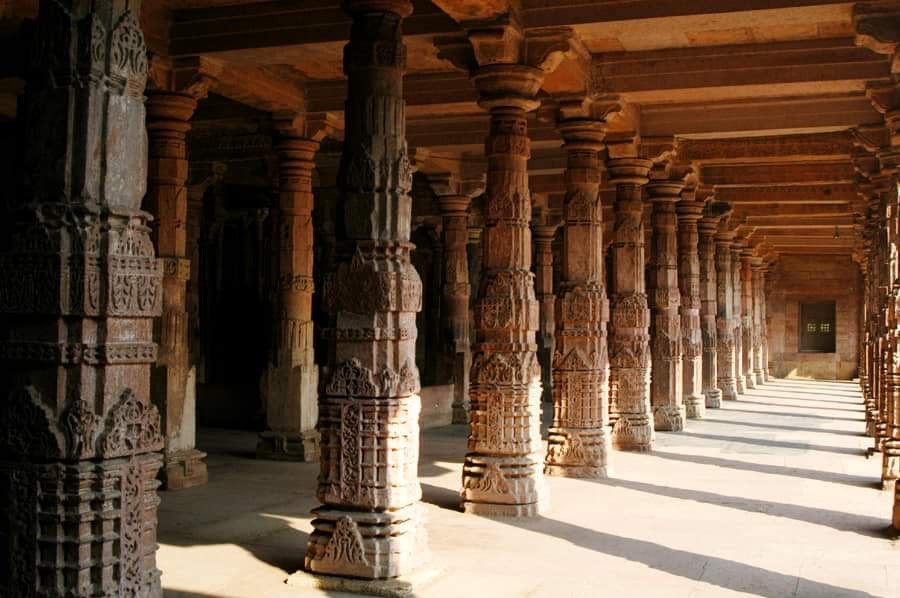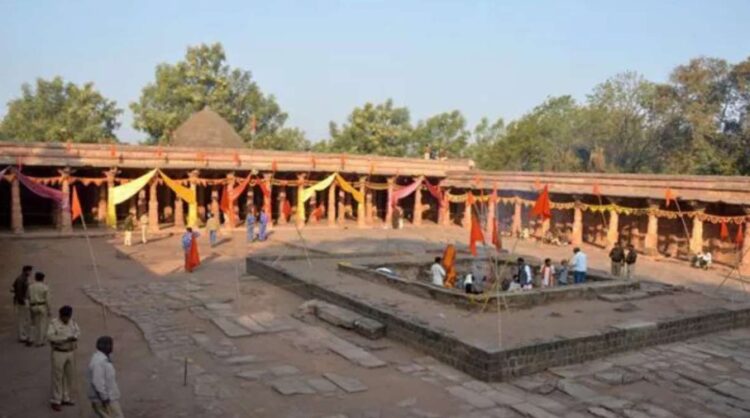The Paramara dynasty holds a significant position in the study of Indian history. They are noteworthy not just for their political achievements but also because of their long strides in the field of art and architecture.
Between the 10th and the 13th century, this dynasty ruled over a substantial part of Central India, with their capital in Dhar; located in present-day Madhya Pradesh. The most celebrated king of this dynasty, popularly known as King Bhoja, was also a great patron of art and architecture. During the reign of King Bhoja, who ruled from the early to mid-11th century, a temple of Saraswati, or Vagdevi, the goddess of knowledge, was constructed in Dhar.
During that period, this temple developed into an important centre of education, and owing to its importance, pilgrims from faraway places used to visit this temple. However, during the mediaeval period, this temple was also subjected to the wrath of Islamic invaders.
In this period of renaissance, the Hindu people are looking forward to reviving their glorious past, which was earlier tarnished and hidden under the veil of dynastic politics. Recently, the archaeological excavations conducted by the Archaeological Survey of India in Kashi Vishvanath have brought to light thatthe structure standing adjacent to it was built by destroying a Hindu temple.In a similar context, the Hon’ble High Court of Madhya Pradesh ordered the Archaeological Survey of India to conduct similar archaeological investigation and ‘scientific survey’ in order to unearth the truth of Bhojshala. It is worth mentioning here that in Indian Archaeology – A Review 1984-85 (IAR 1984-85; 183) it has been cited that Bhojshala, situated in Dhar, is originally a Temple of Saraswati, which was constructed by King Bhoja in the 11th century. It has also been mentioned that towards the western and northern part of Bhojashala, remnants of a temple in the form of an adhisthana, can be observed. Moreover, in the Corpus Inscription Indicarum Volume-7 it has been stated that during the period of British Colonialism, a British Officer recovered a sculpture of Goddess Saraswati in the ruins of Bhojshala, which is currently housed in the British Museum. According to the attributes of the sculpture, it can be inferred that it is of Vagdevi and according to the inscription inscribed on the sculpture, it has been concluded that this was constructed in the 11th century CE.Probably this statue must have been installed in Bhojashala, built by King Bhoja. Archaeological excavations conducted by the Archaeological Survey of India in 1987 revealed the existence of 32 sculptures belonging to Hinduism. Therefore, it can be safely stated that varied research over the years have concluded the existence of ruins of a Hindu Temple in Bhojashala.
Based on the above cited facts, referring to Bhojashala as a mosque is baseless. This can also be observed on the pillars present inside the Bhojashala complex, which are Paramara style pillars bearing Hindu sculptures.Moreover, architectural ruins of temples of the Paramar period have also been used for the construction of graves surrounding the complex of Bhojshala. These remains have been coloured in green in order to hide their identity as remnants of a temple. The question now remains, on the outcome of the efforts which have been initiated by the Hon’ble High Court.

Parmara style pillars observed inside Bhojashala complex
Under the guidance of Prof. Alok Tripathi, a team of archaeologists will examine the inscriptions present on the ruins inside Bhojashala as well as in the Dargah present near the complex. The eras and information mentioned in these inscriptions will enable archaeologists to chronologically date the antiquity of the structure at Bhojashala. According to archaeologist KK Lele, two pillars at Bhojashala contain an inscription which indicates to it being written by a teacher of grammar so as to enable the students of grammar to learn from it. The study of epigraph holds an important place in archaeology and it seems that the inscriptions present in the complex of Bhojashala will enable archaeologists to unearth its identity and antiquity.
Another important work that this team will carry out is archaeological excavation inside the Bhojshala complex. Excavation will be carried out using scientific methods. It will become clear from the excavation whether there are remains of a temple present or not.However, the presence of remains of an adhisthana indicates that the temple was destroyed and a new structure was built using the ruins. Excavations shall also clear the antiquity of the structure based on the adhisthana.
Another related topic of discussion is the carbon dating method. It is important to mention that the C14 dating method can only be used to determine the age of organic substances. During excavation, if charcoal or ash is recovered, it will be helpful in understanding the antiquity of the deposit. Popular belief among the public is that C14 dating technique can be employed on everything, including stones, which is scientifically wrong. The collation of evidences recovered earlier and the hope of fresh studies to be conducted in Bhojashala gives me a new ray of hope that fresh information shall be unearthed once archaeological investigations take place.
After archaeological excavations, study of inscriptions, photography and documentation, the team of archaeologists from the Archaeological Survey of India shall submit a detailed report of the work done at Bhojashala to the Hon’ble High Court. This report shall enable us to move another step forward in proving that King Bhoja constructed a temple of Vagdevi in Dhar, which was later destroyed by Islamic invaders. Similar to the work at Ayodhya, Bhojashala shall also regain its old glory and archaeological excavations will be a major aid in this.



















Comments